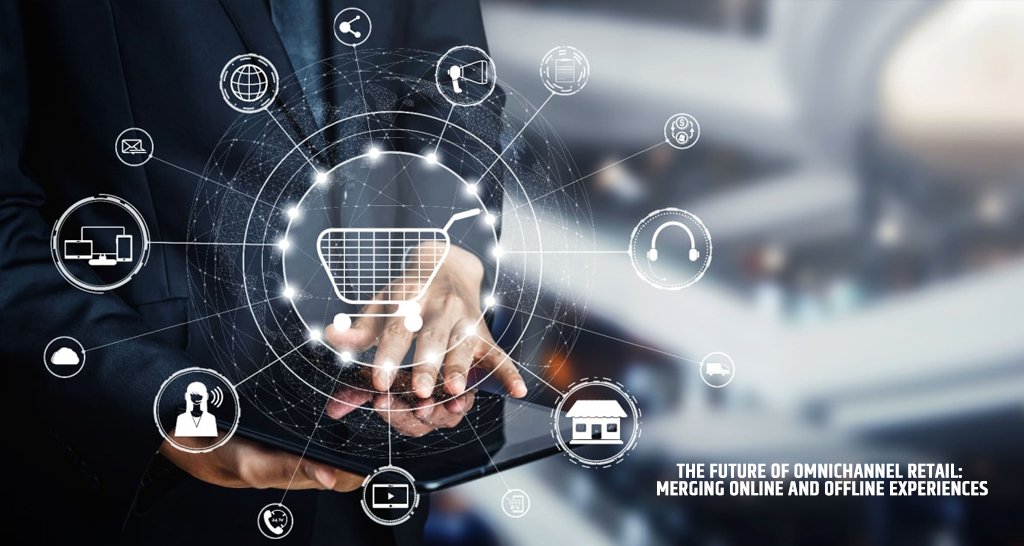Understanding Omnichannel Retail
Omnichannel retail represents a transformative approach within the shopping landscape, focusing on the integration of multiple channels to create a seamless and cohesive customer experience. Unlike traditional multichannel retail, which simply provides various ways to shop—such as online, in-store, and through mobile applications—omnichannel retail prioritizes the unification of these platforms. This ensures that consumers can effortlessly navigate between different shopping environments while enjoying a consistent brand experience.
The significance of omnichannel retail has grown in response to shifting consumer expectations. Today’s consumers demand not only variety in shopping options but also a harmonized experience regardless of the channel they choose. Whether a customer is visiting a physical store, browsing an e-commerce website, or utilizing a mobile app, they expect the same level of service, product information, and brand identity. Such expectations challenge retailers to strategically align their marketing, customer service, and inventory management across all platforms.
In this environment, maintaining brand consistency is crucial. Retailers must ensure that product offerings, pricing, and promotional campaigns are unified across physical and digital channels. This integration fosters trust and reinforces brand reliability among consumers. Moreover, the use of data analytics plays a pivotal role in understanding customer behavior and preferences, enabling retailers to create personalized and targeted shopping experiences tailored to individual needs.
Ultimately, the transition to an omnichannel approach reflects a broader evolution in retail, where customer-centric strategies take precedence. By bridging physical and online experiences, businesses can foster stronger customer relationships, enhance satisfaction, and drive loyalty in an increasingly competitive marketplace.
Technological Innovations Driving Omnichannel Strategies
The landscape of retail is rapidly evolving, and technological innovations are at the forefront of driving effective omnichannel strategies. These advancements enable retailers to create seamless and cohesive experiences for consumers, blending online and offline shopping channels. One of the pivotal technologies shaping this future is artificial intelligence (AI). AI plays a crucial role in analyzing customer behavior and preferences, allowing retailers to tailor personalized shopping experiences. By deploying machine learning algorithms, brands can predict trends, optimize inventory, and enhance customer interactions, which ultimately leads to increased customer loyalty and higher sales.
Big data analytics also significantly contribute to the omnichannel approach. Retailers are now able to gather vast amounts of data from various touchpoints, including social media, e-commerce platforms, and in-store transactions. This data is invaluable as it provides insights into customer preferences, enabling retailers to make informed decisions that enhance the shopping journey. Through the application of sophisticated analytics tools, retailers can segment their audience and customize marketing efforts, ensuring that messages resonate with specific consumer groups.
Furthermore, the integration of customer relationship management (CRM) tools facilitates better engagement with consumers. CRM systems enable retailers to track interactions across multiple channels, ensuring that customers receive consistent and relevant communication. This cohesive approach significantly enhances the customer experience, as it bridges the gap between digital and physical touchpoints.
In addition to AI and data analytics, mobile technology and the Internet of Things (IoT) are revolutionizing the retail experience. Mobile apps empower consumers to access information, make purchases, and receive notifications in real-time, thereby enhancing convenience. IoT devices, such as smart shelves and connected inventory systems, streamline operations and provide real-time stock information, further supporting an omnichannel experience. A compelling example of successful technological integration can be found in brands like Nike, which utilizes AR and mobile applications to create engaging in-store experiences while seamlessly encouraging online interaction.
Benefits of an Omnichannel Approach for Retailers and Consumers
The omnichannel retail strategy fosters a seamless integration of online and offline shopping experiences, providing numerous advantages for both retailers and consumers. For retailers, one of the primary benefits is increased customer satisfaction, which often leads to higher sales and improved client retention rates. By offering a consistent experience across all channels, businesses create a more engaging shopping environment, which encourages customers to return.
Another critical advantage of an omnichannel approach is improved inventory management. Retailers can more effectively monitor stock levels and distribution across various platforms, ensuring that products are available where and when customers need them. This efficiency not only reduces the likelihood of stockouts but also minimizes excess inventory, leading to optimized operational costs.
Furthermore, leveraging an omnichannel strategy provides businesses with better data insights. Retailers can analyze customer behavior across different channels to inform their marketing efforts. With detailed analytics, brands can target promotional campaigns more accurately, personalize communications, and ultimately enhance their overall marketing effectiveness.
Consumers, on the other hand, experience a plethora of benefits from an omnichannel retail approach. Chief among these is the convenience it offers. Shoppers can easily transition between online and offline channels, selecting the best method for their current needs, whether that involves purchasing items online for delivery or visiting a physical store to view products first-hand.
Additionally, consumers enjoy personalized shopping experiences tailored to their preferences and purchase history, often resulting in enhanced service quality. Retailers utilizing diverse channels can capitalize on customer data to create customized promotions and recommendations that resonate with individual shoppers.
Real-world examples reflect these advantages, as businesses adopting omnichannel strategies often report increased sales figures and enhanced customer loyalty. By merging online and offline retail experiences, both retailers and consumers can benefit significantly, paving the way for a more effective and fulfilling shopping dynamic.
Challenges and Future Trends in Omnichannel Retail
Omnichannel retailing presents a variety of challenges that retailers must address to effectively integrate online and offline experiences. One significant hurdle is the integration of various sales channels, which requires aligning software systems, inventory management, and customer data across platforms. Many retailers struggle with achieving seamless connectivity, leading to disjointed customer experiences. Subsequently, businesses must invest in technology that supports unified commerce, allowing them to manage operations efficiently and provide consistent service.
Another challenge lies in measuring the success of omnichannel initiatives. Traditional metrics may not suffice, as they often fail to account for the full customer journey. Retailers must adopt advanced analytics and develop new techniques to evaluate performance comprehensively. This includes tracking key performance indicators related to both online engagement and in-store interactions. Furthermore, customer feedback mechanisms should be used to gather insights about user experiences across all platforms, ensuring continuous improvement.
Looking to the future, several trends are poised to reshape the omnichannel retail landscape. Social commerce is on the rise, as consumers increasingly turn to social media platforms for shopping inspiration and recommendations. Retailers must adapt their strategies to capitalize on this trend by creating shoppable content that blends seamlessly with social interactions. Additionally, the integration of augmented reality (AR) technology is expected to enhance customer engagement by enabling interactive shopping experiences and virtual try-ons.
Moreover, evolving consumer behaviors, especially in the wake of the COVID-19 pandemic, have led to increased demand for personalized and convenient shopping experiences. Retailers who can leverage data analytics to tailor their offerings and anticipate consumer needs will stand out in a competitive marketplace. By addressing integration issues, refining measurement approaches, and embracing emerging trends like social commerce and AR, retailers can position themselves advantageously within the future omnichannel landscape.



